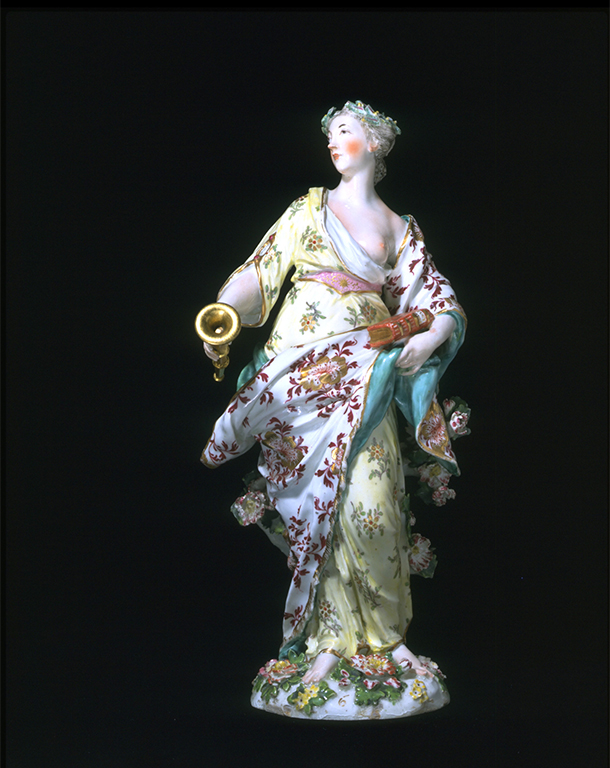
Welcome to this year’s edition of the V&A Online Journal. Our sixth issue features writing from current Museum staff, external scholars and graduates of the V&A/RCA MA in the History of Design. In this issue, each article uncovers the hidden histories embedded in objects: from computer-generated art and design, through a rare manuscript written by an 18th-century artisan, to the Museum’s collection of theatrical prompt books. Each author, in taking seriously the seemingly slight or previously slighted, shows how by bringing new research questions and innovative methodologies we can discover fresh social, cultural and political meanings in the Museum’s collections.
We begin with Melanie Lenz’s study, which celebrates the significant contributions made by women to the history of computer art. Using extensive evidence from the Archive of Art & Design and the Museum’s Word & Image collections, Lenz’s piece offers a corrective to much of the existing scholarship on the subject, which has yet to fully engage with the critical role played by women as artists, curators and educators. The article explores these developments against the broader currents of the relationship between gender and technology in the 20th and 21st centuries, offering a compelling case for the V&A’s ongoing commitment to collecting computer-generated art and design.
Katrin Seyler focuses on an object that quite literally remained hidden until its rediscovery on 26 December 1967. This short manuscript, written by the German cabinet-maker Jacob Arend, was hidden inside the elaborate writing cabinet he made, alongside his fellow journeyman, Johannes Wittalm, in the Würzburg workshop of Servatius Arend. As Seyler shows, this document, in spite of its brevity, offers an exceptionally rare insight into the cognitive and emotional worlds of early modern craftsmen, suggesting how and why artisans used writing, a comparative unfamiliar cultural practice for them, as a coping mechanism during challenging life experiences. Sophie Cope’s companion piece explores what Arend and Wittalm’s writing cabinet tells us. Using close analysis of materials, form and techniques, Cope sets this extraordinary object in the contexts of luxury production, consumption and global trade. The writing cabinet will soon be available for closer scrutiny: after a period of relative seclusion in the V&A’s stores at Blythe House, it will take pride of place in the Europe 1600–1800 Galleries, which open to the public in early 2015.
Next, Beverley Hart’s survey of the prompt book collection in the V&A Department of Theatre & Performance reveals how the annotations and coded markings that cover these documents offer vital clues to the staging of plays. Hart’s study provides an invigorating discussion of the challenges inherent in any examination of past performance practices, as well as those currently faced by the Museum in its conservation of these once hardworking documents. And, as her article demonstrates, close scrutiny of prompt books can disclose not just what happened on stage but can also provide fascinating insights into life behind the scenes.
And finally, Miranda Clow’s essay concerns a different kind of printed ephemera: an early 19th-century trade card produced to promote the Hope Insurance Company. In showing how the nascent insurance industry ‘nurtured objects to compensate for its lack of material product’, Clow shows how this trade card functioned as a deftly realised example of conceptual design, marrying immateriality with abstract virtues to make something out of nothing.
The V&A Online Journal aims to provide a forum for research papers from scholars inside and outside the Museum, in a bid to promote dialogue and open up new ways of interrogating material culture, current design practice, histories of design and all other related fields. Provided that submissions meet the academic standards set by our Editorial team and peer reviewers, we welcome articles for future issues on the history of art, architecture and design relating to the V&A’s collections, public programme or institutional history; features focusing on new acquisitions or objects linked to V&A exhibitions; reflections on the educational or creative industries role of the Museum and reviews and previews of V&A publications, conferences or displays.
Further details on submission are available on the Submission Guidelines page and we can be also contacted at vandajournal@vam.ac.uk.
We would very much like to thank our authors and all who contributed to the successful production of this issue.
Journal production and design
General Editor: Angela McShane
Guest Editor: Elaine Tierney
Sub-Editors: Jan Sibthorpe and Catherine Gregg
Editorial Assistant: Annabel Sheen
Digital Media Team: Simon Goss and Jo Jones
Research Department: Katherine Elliot
Editorial Advisors
Sarah Cook
Barbara Lasic
Dawn Hoskin
Sarah Medlam
Ed Potten
Adam Smyth
Grant D. Taylor
Simona Valeriani
Paul Werstine